Physics MCAT
1/54
Name | Mastery | Learn | Test | Matching | Spaced |
|---|
No study sessions yet.
55 Terms
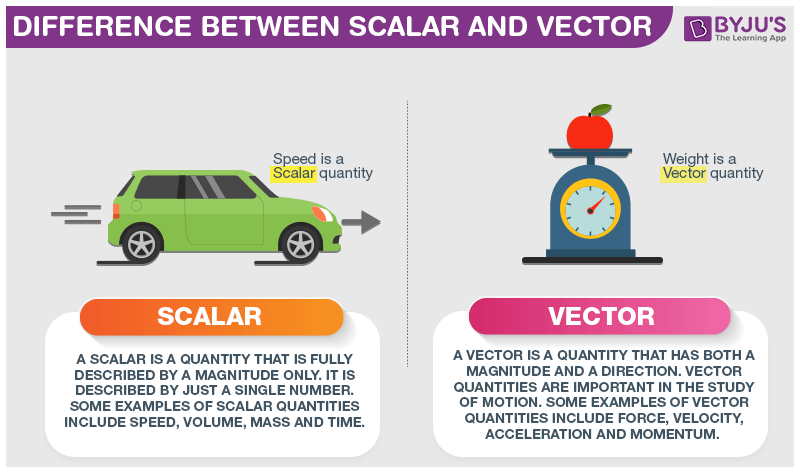
Vector Vs Scalar
Vector
Have Magnitude and direction
Scalar
Have magnitude no direction
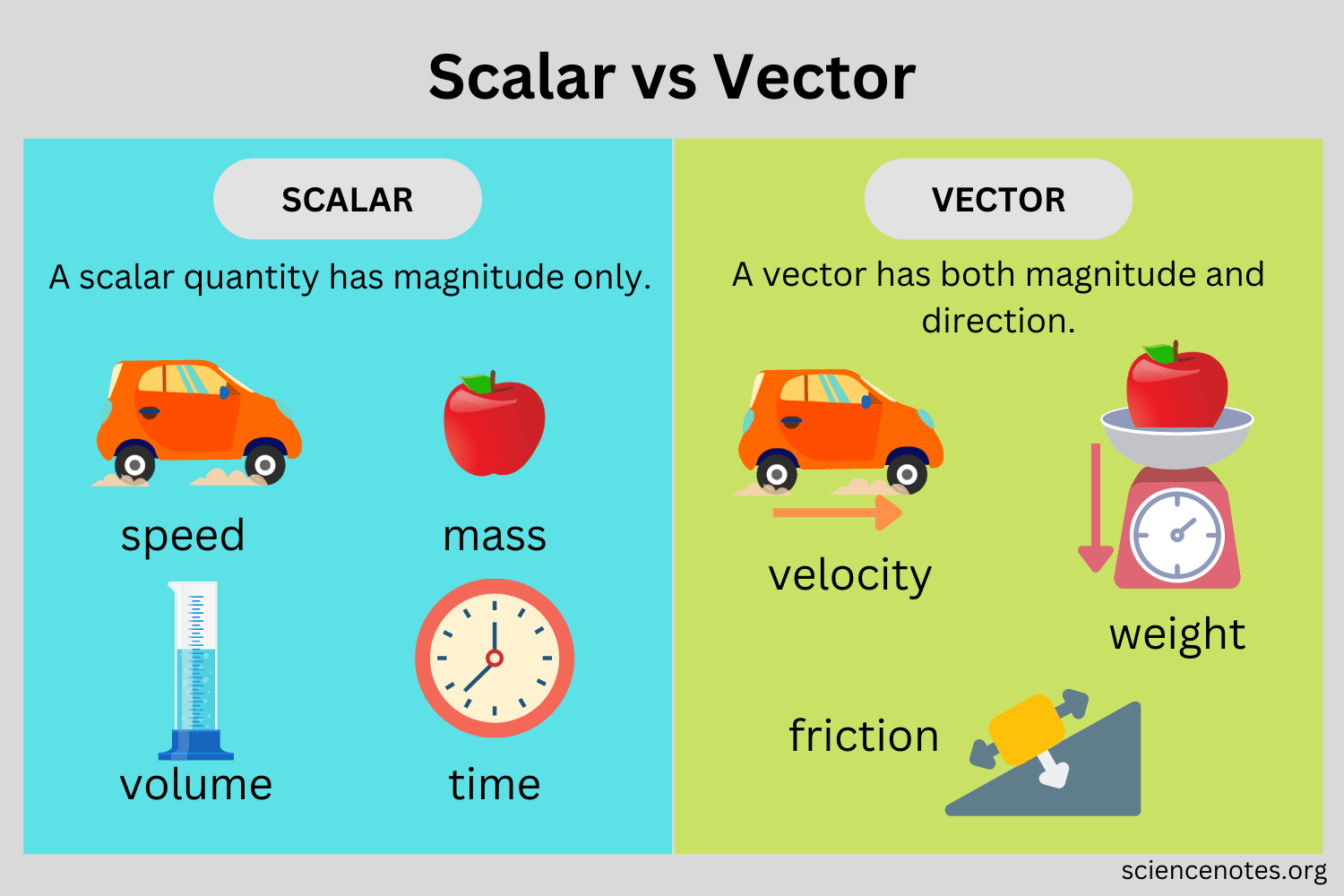
Vector Examples
Velocity
Scalar Examples
Speed
Velocity
Average Velocity
Formula V = d/t
Instantaneous Velocity
You can calculate the speed of the object at anytime in point.
Acceleration
Change in velocity
V= at
We can drive these equations on the photo from V = at
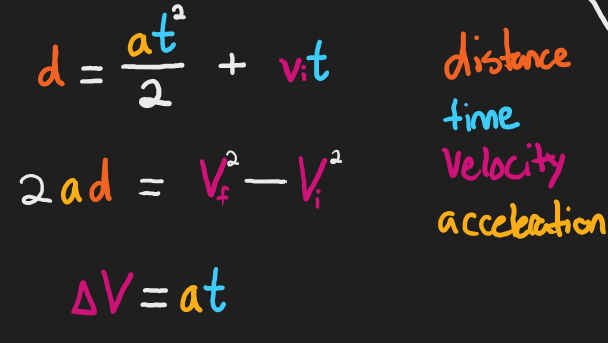
Acceleration Equations
Three Formulas are derived from each other
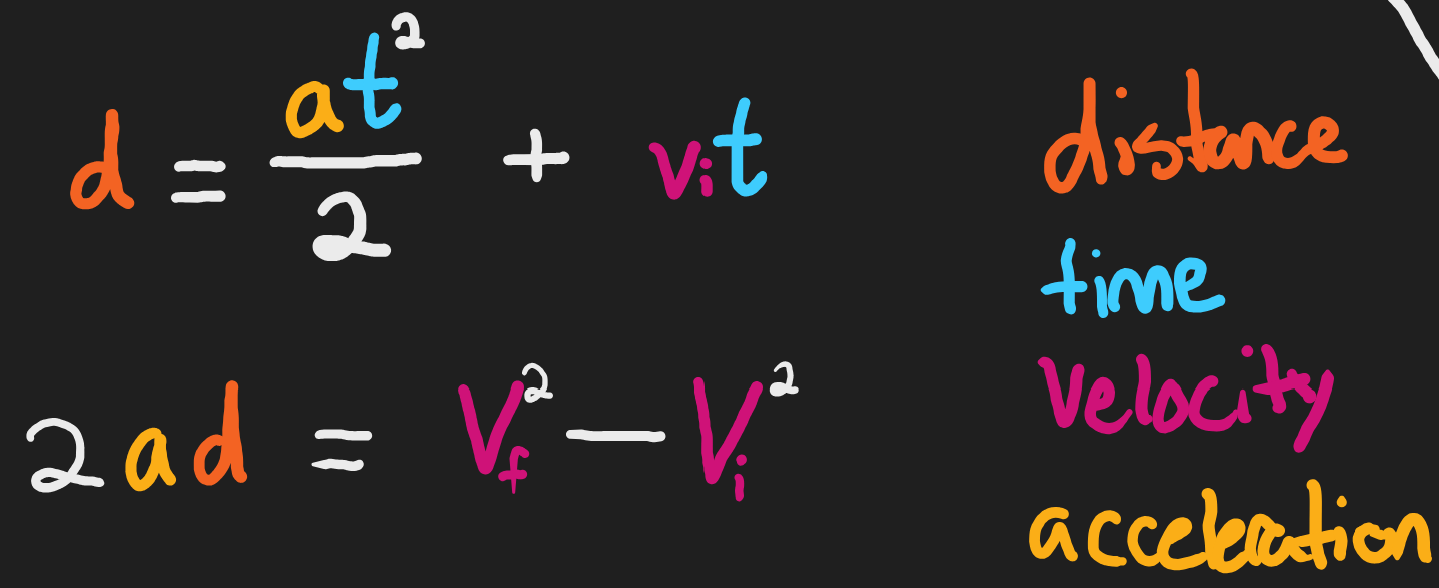
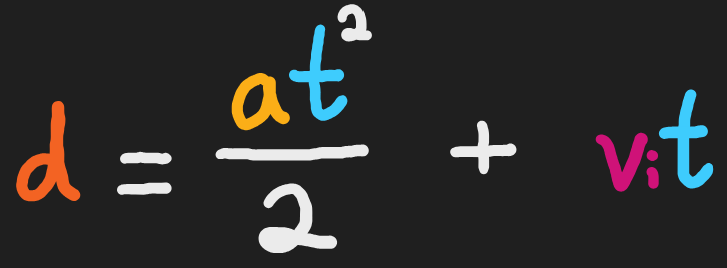
Acceleration Example Question:
A ball is thrown horizontally off a building that is 45 meters high. How long does it take to hit the ground (ignore air resistance)
How fast is the ball going when it hits the ground?
We can use Formula = D = ½ at2
When you divide something by 2 is the same as when you multiply by ½.

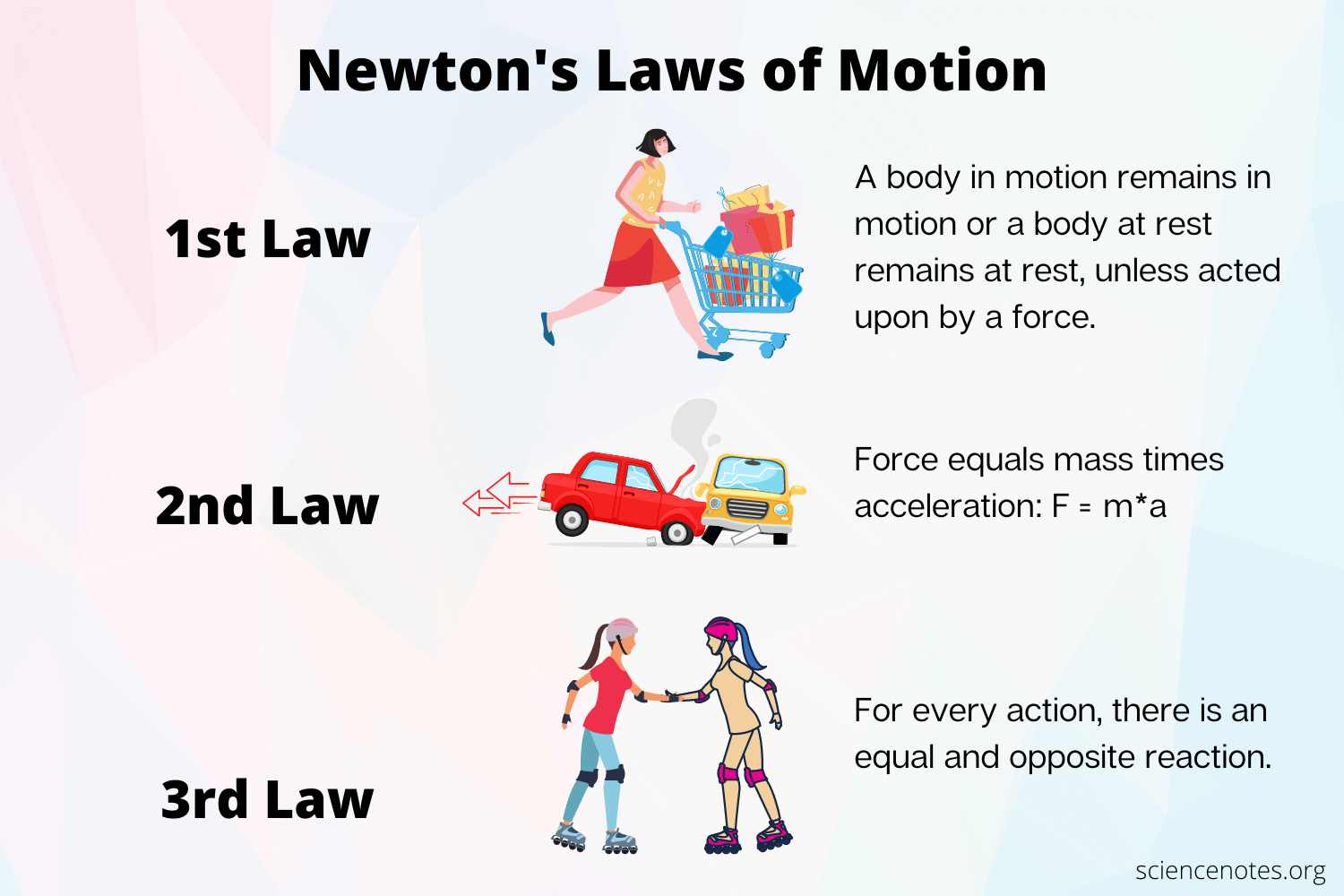
Newton’s Law Of Motion
An object at rest will remain at rest unless we apply unbalanced force to it
An object in motion will remain in motion unless unbalanced force acts on it
For every action there is an equal and opposite reaction
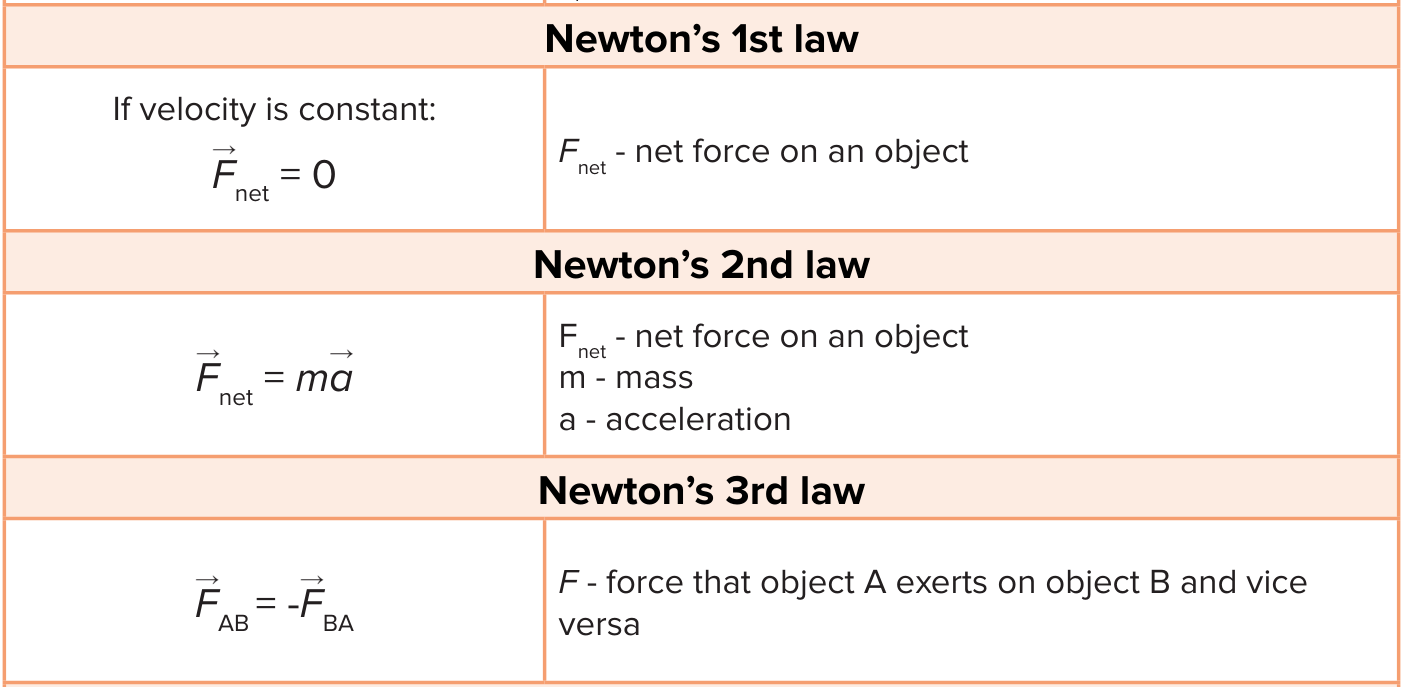
SI Units
Force Unit : Newton (N)
Formula: F = ma
Newton (N) = (kg) (m/s2)
Work Unit: Joules (J)
Formula : W = Fd
Joules (J) = Newton (N) = (kg) (m/s2) x Meters (m)
Power Unit: Watt (W)
Formulas: P = W/t
Watt (W) = Joules (J)/ S
Another Formula: P = FV
Density Unit (g/cm3 OR kg/m3)
Formula: ρ = m/v
ρ = kg/m3
ρ = g/cm3
Pressure Unit: Pascal (Pa)
Formula: P = F/A
Pa = N/m2
A 70 kg man climbs up two flights of stairs for a total of 15 meters. How much work did he do?
If it took him 20 seconds to climb these stairs, How much power did it require?
Formula:
F = ma
W = Fd
P = W/t
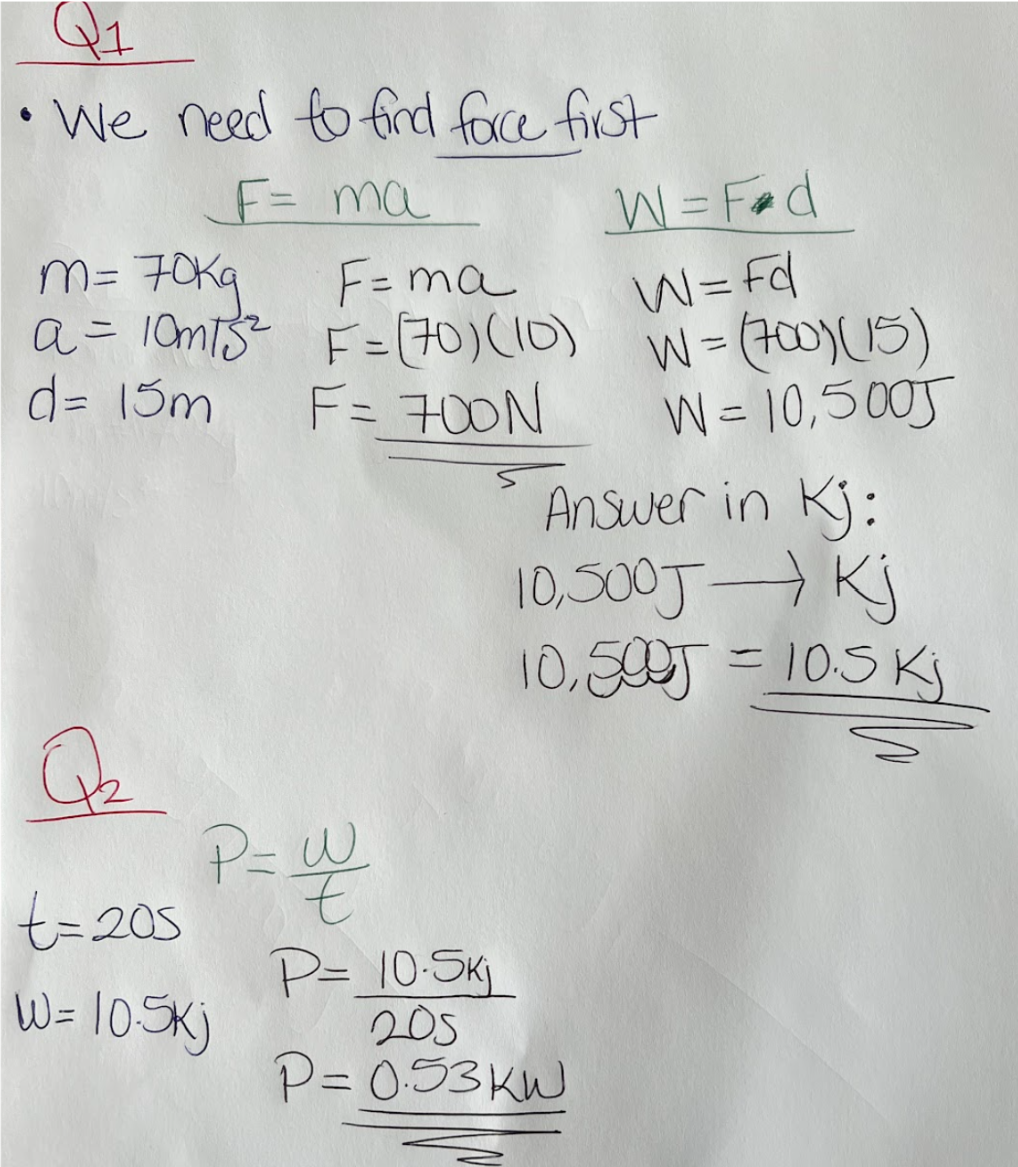
Object sliding comes to a stop when friction force acts on it
Coefficient of friction is is a constant and unitless
Normal force is the equal and opposite force that is pushing an object
F = ma
Example: A cup in a table has two forces, one pushing the table down and the other is the Normal force that acting on the opposite
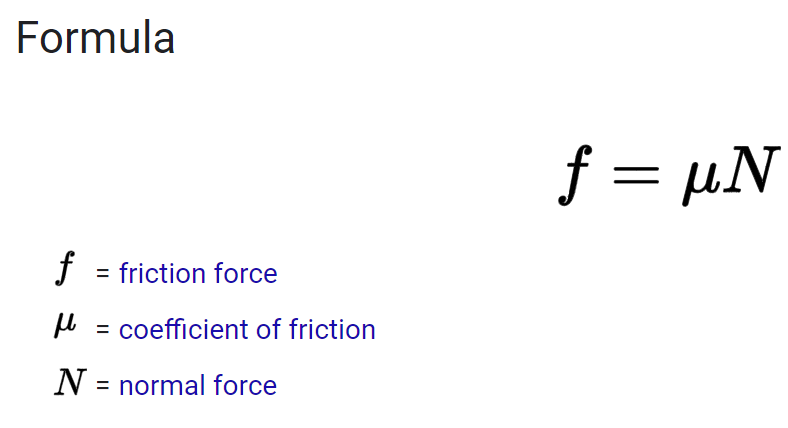
Static Friction
Static Friction
Trying to move a refrigerator and it doesn’t move the first time and then you put more force until it suddenly moves. This happens because there must be opposite force acting on the refrigerator to move
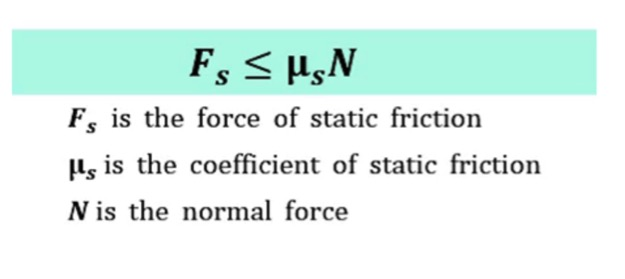
Friction Question
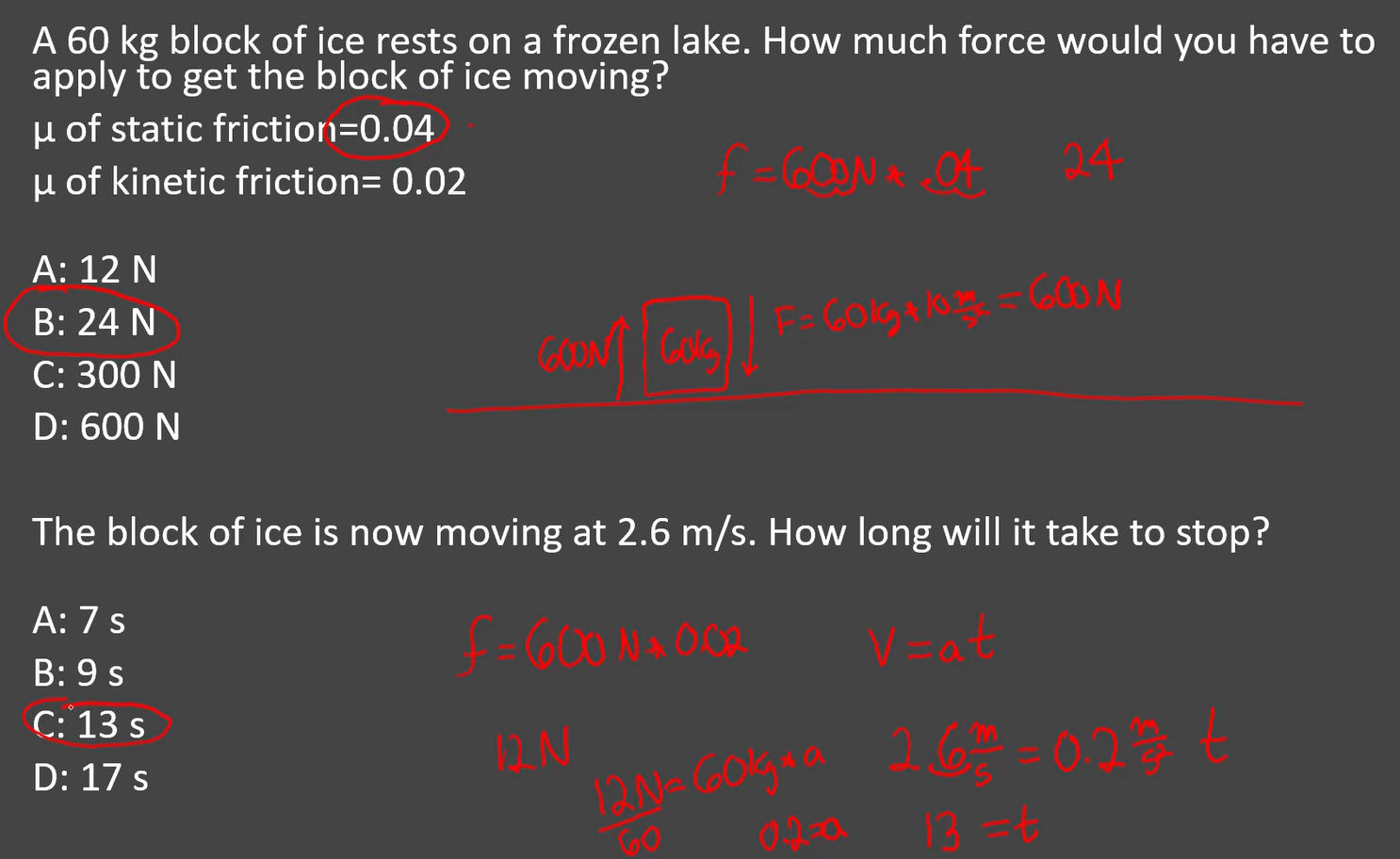
Energy
Energy is the ability to do work
Energy can be stored, used and interconvert different types of energies
Conservation Energy: Energy can neither be neither be created or destroyed it can only be converted from form to another
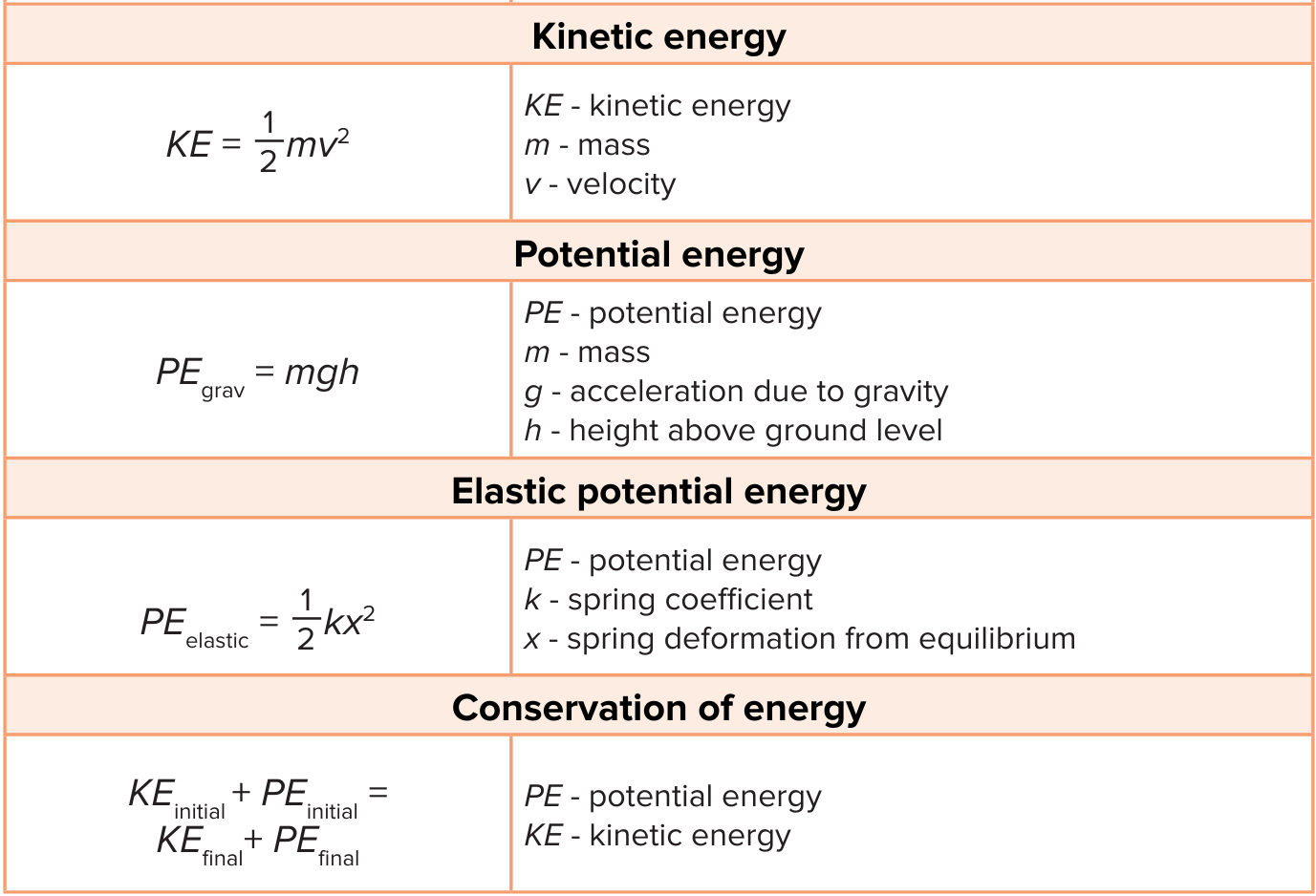
Types of Energy
Potential Energy - Height
Gravitational Energy
High up, ability to fall
Formula: PE = mgh
Elastic Energy
Spring compressed - storing PE energy and opposite is true
Formula: PE = ½ Kx2
Kinetic Energy - motion
Motion of particles
Example: Heat
Heat is motion of particles
Formula: K = ½ mv2
Picture: A hill - a ball at the top of the hill not moving has a zero kinetic energy and 100% Potential, when in the middle it’s 50/50 (PE = KE)

A stationary ball is released at the top of a 20m slope. What will be the velocity of the ball at the bottom of this hill
Formula: K = ½ mv2
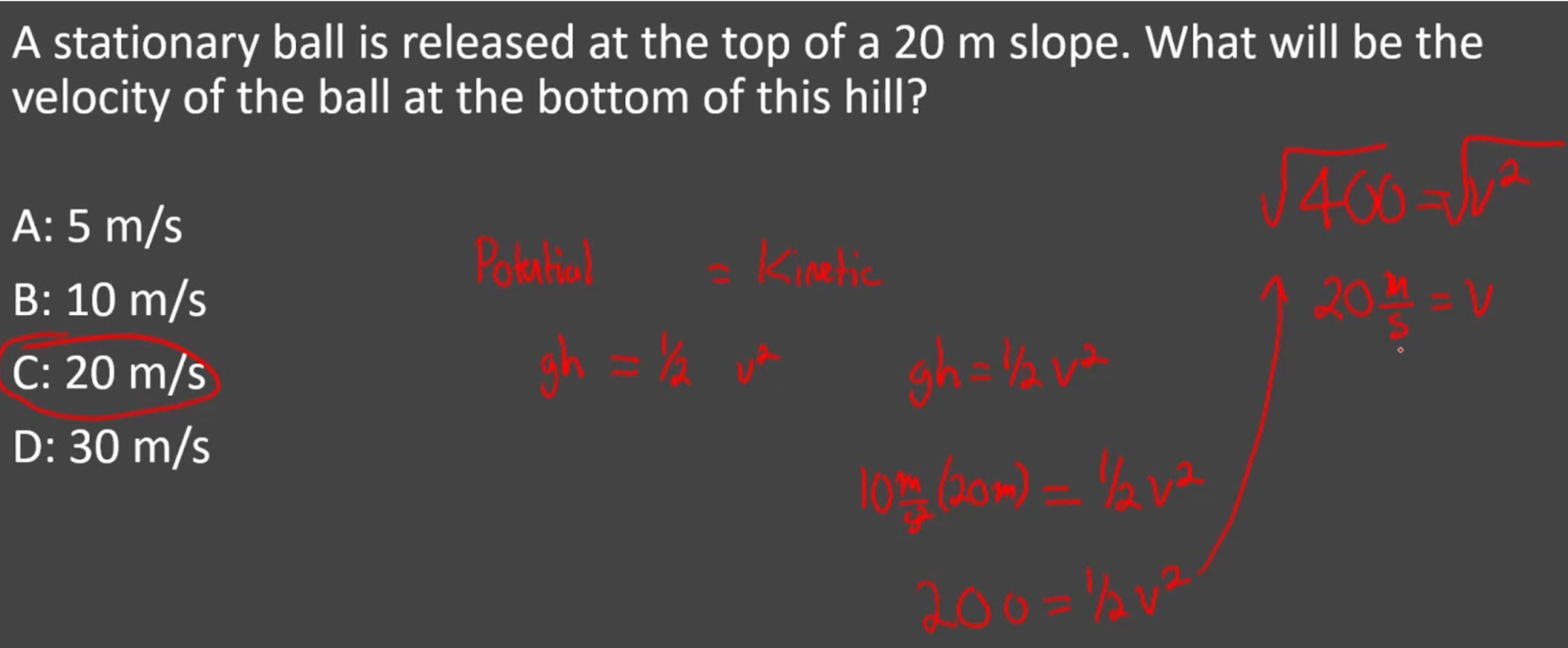
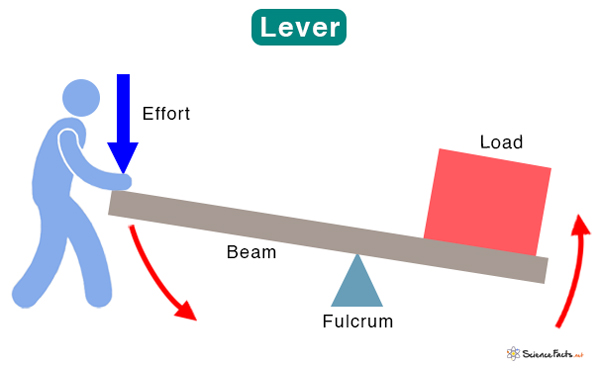
Levers and Torque (moment)
Torque (moment) - is the force that causes objects to return or rotate
Formula : 𝜏 = Fd
𝜏1 = 𝜏2
Torque (𝜏) practice question #1
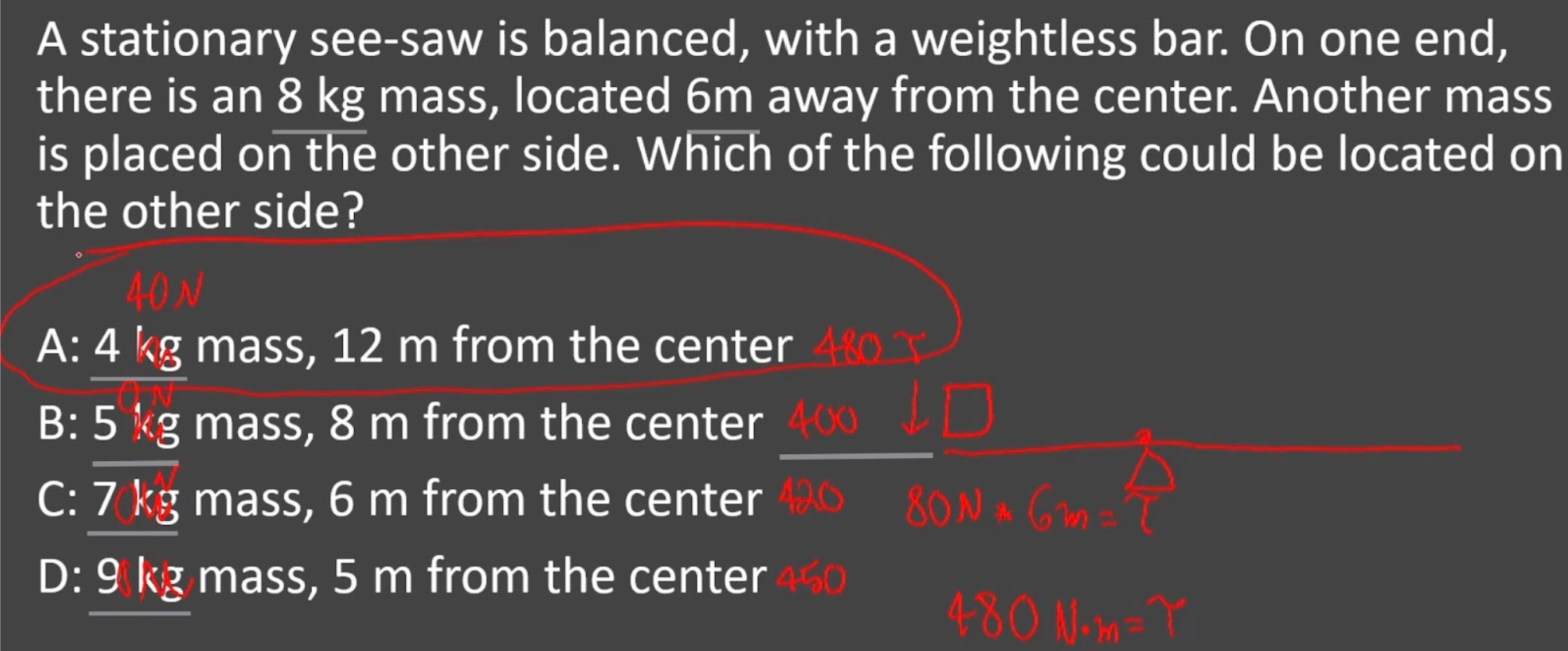
Torque (𝜏) practice question #2


Density
Density is much mass is present in a given volume
An object that is more dense in water will sink in water and an object that is less dense in water will float in water
Density of water = 1
Relative Density (specific gravity ) = Calculated relative to water
tells you what percentage of object will sink or float in water

Density practice questions
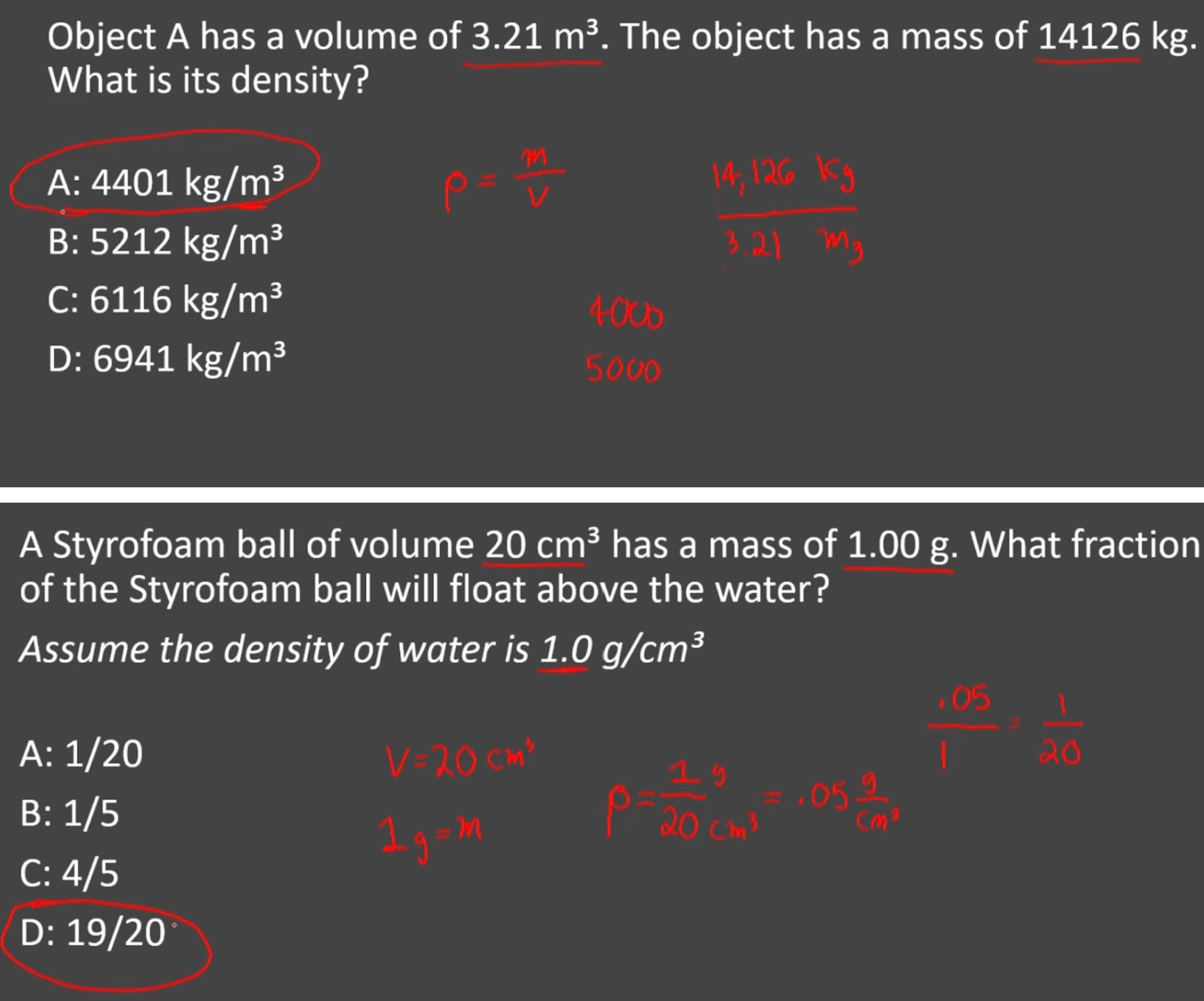
Mass
Amount of a matter that is present in an object

Pressure

Hydrostatic Pressure
Hydro(water) static (stationary) - water is not moving.
Measuring pressure when water is not moving at different level of how deep the water is
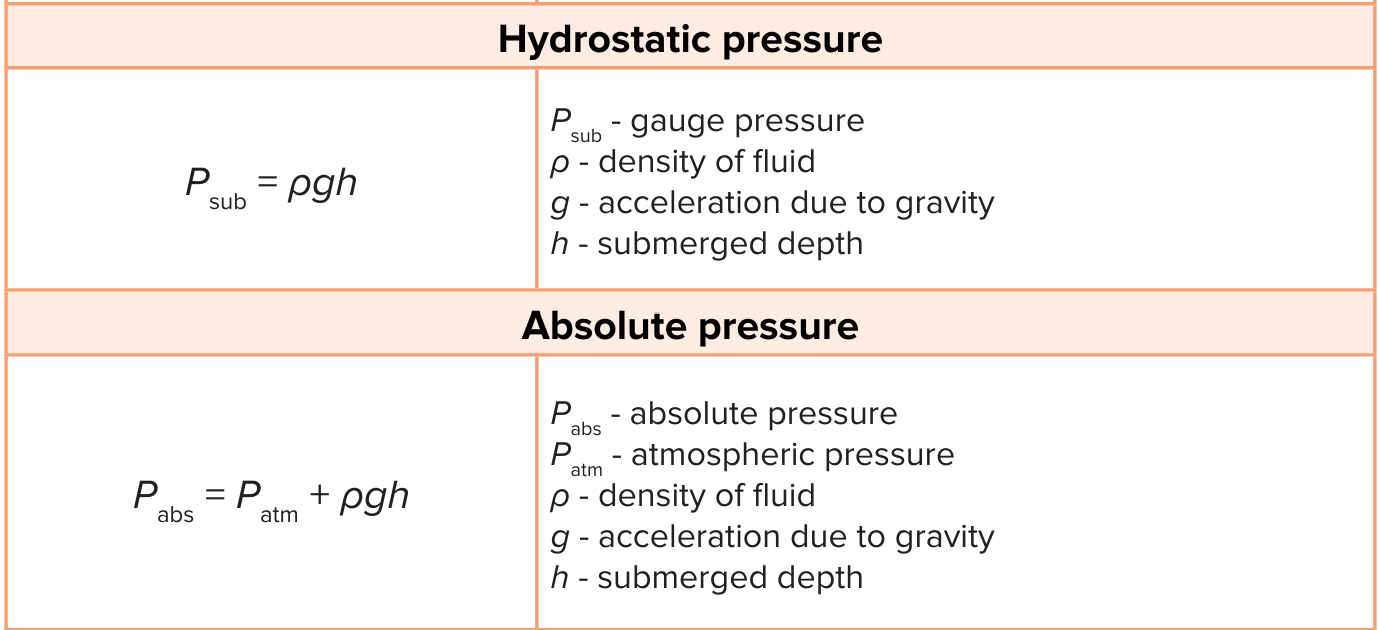
Pascal’s Law
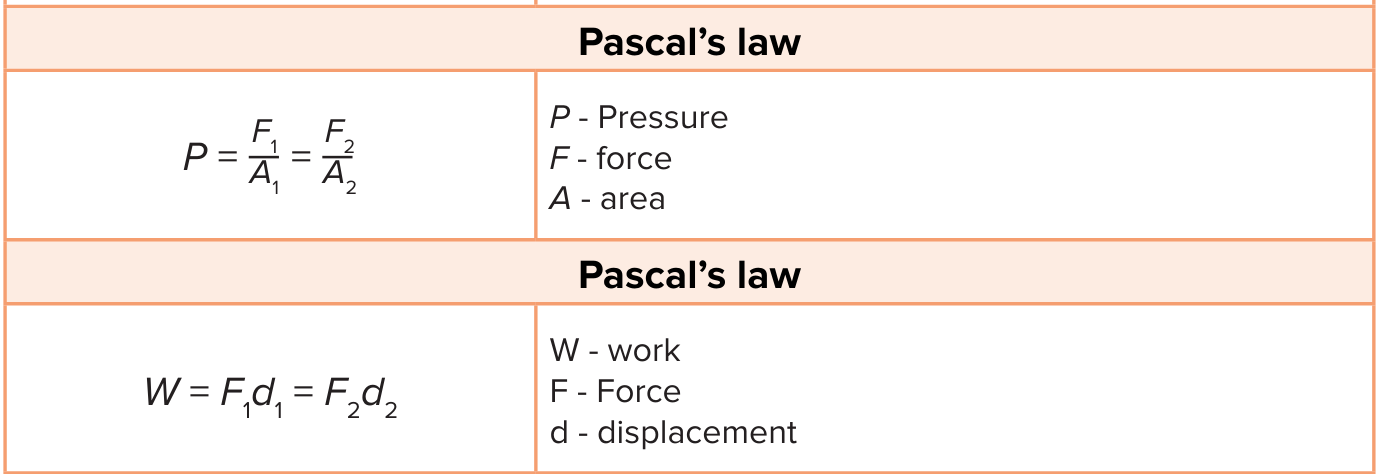
Types of Radioactive Decay
Alpha Decay
Beta Minus Decay
Beta Plus Decay
Gamma Decay
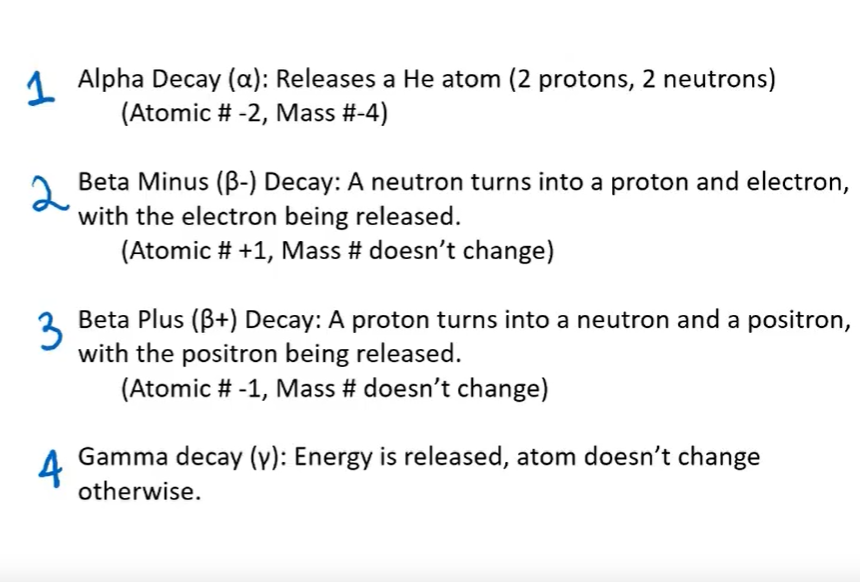
Alpha Decay
Releases a He atom (2 protons and 2 neutrons)
Atomic # -2
Mass # -4
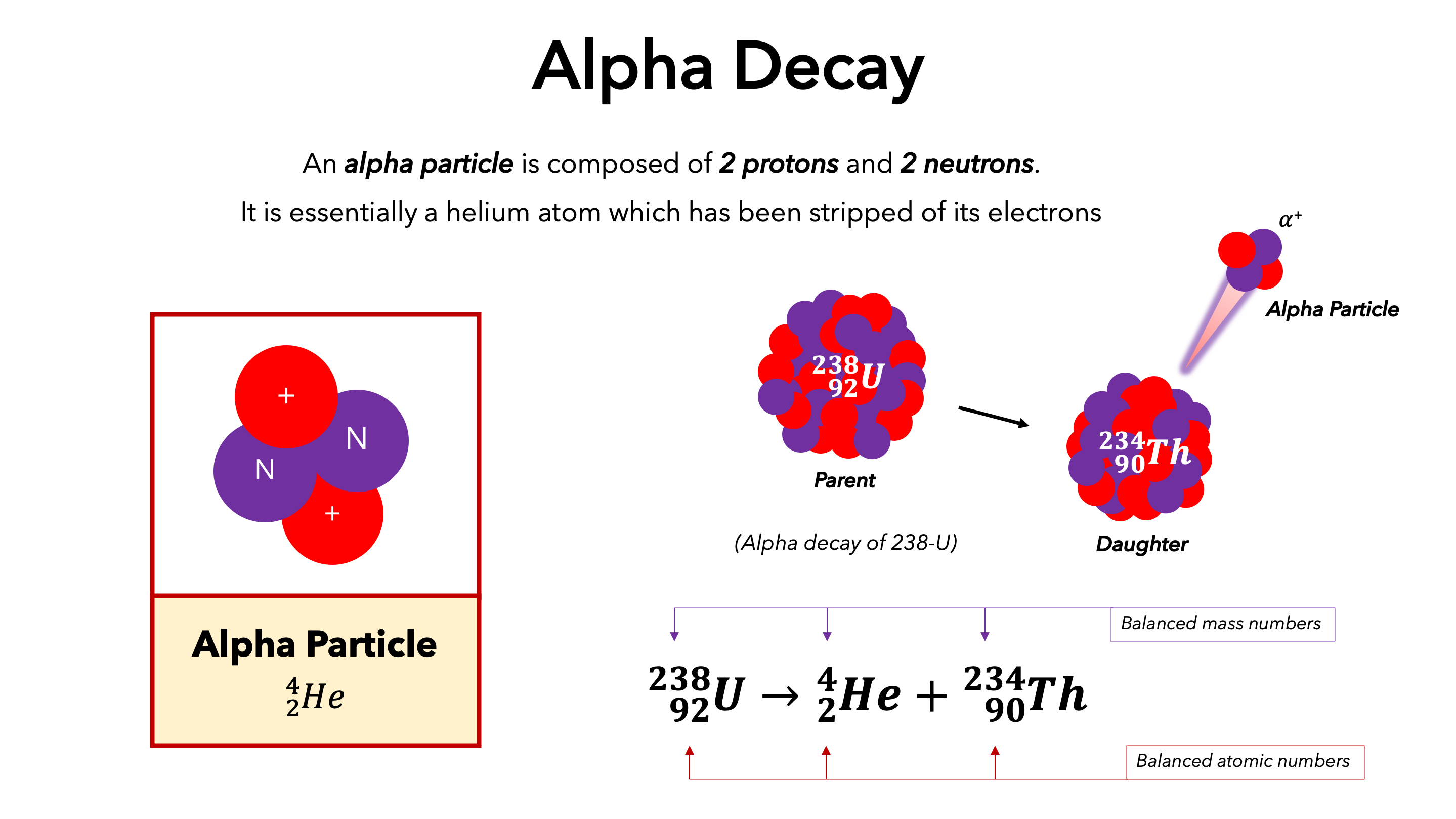
Beta Minus (—)
A Neutron turns into a proton and electron, with the electron being realized
Atomic # +1
Mass # doesn’t change
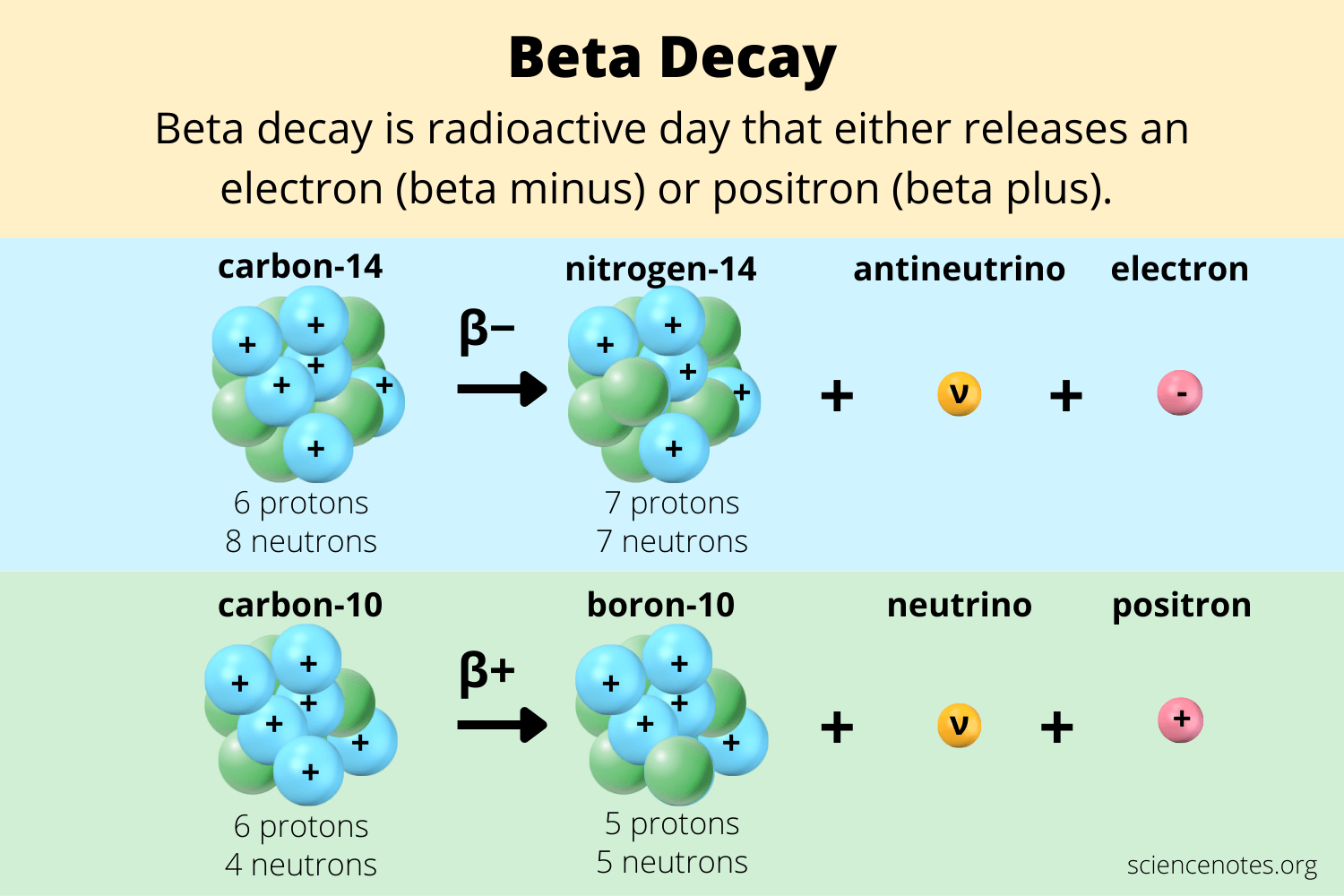
Beta Plus (+)
A proton turns into a neutron and positron with the positron being released
Atomic # -1
Mass # doesn’t change
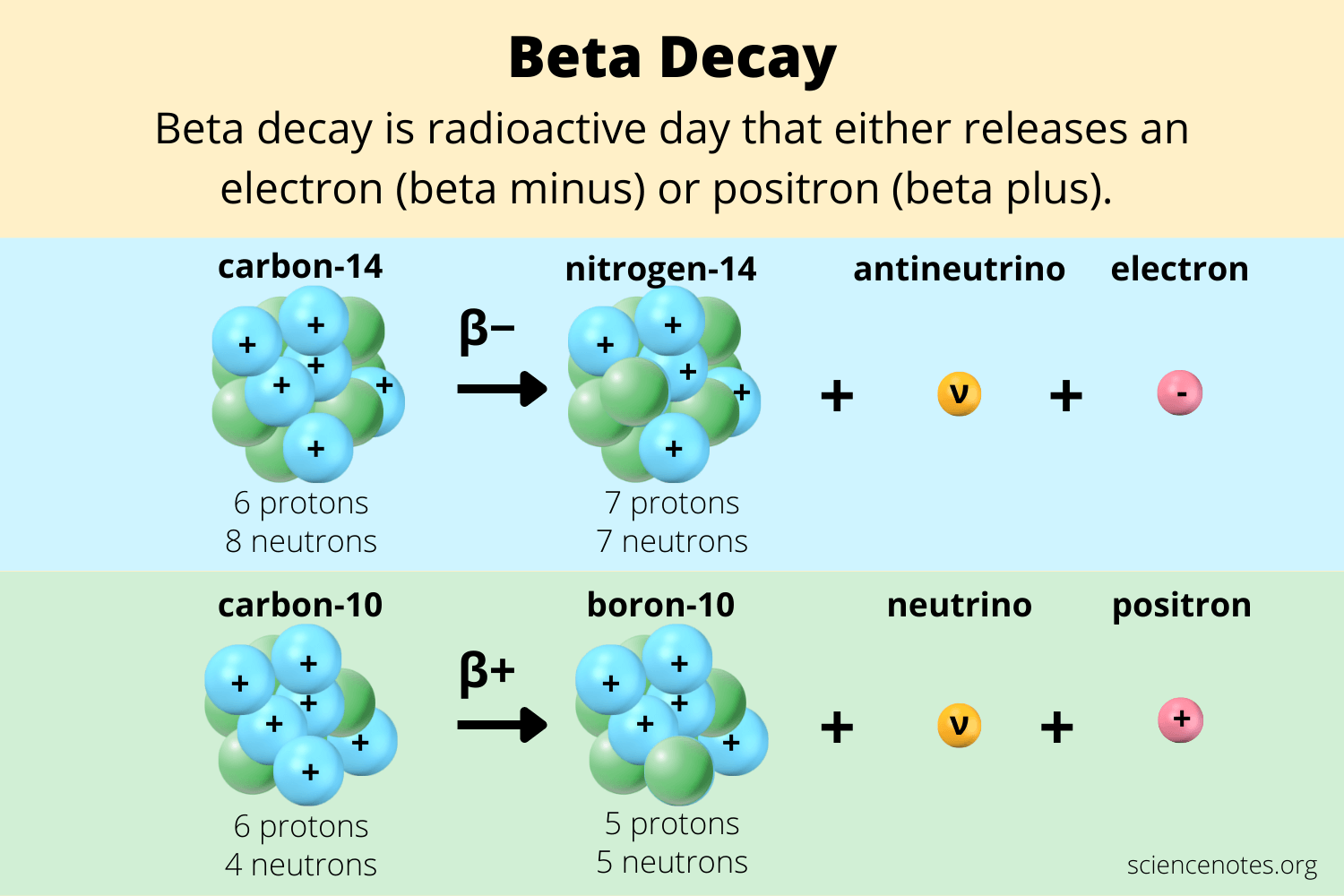
Gamma Decay
Energy is released, atom doesn’t change otherwise
Sound travel most Fastest
Solid —> Liquids —> Gas
The speed of sound is greatest by far in a solid because of the strong intermolecular bonds and close proximity of the molecules. Because the temperatures are close to each other (and even favor iron slightly), iron will have the highest sound speed.
Sound In a Vacuum
Sound doesn’t travel in vacuums
Light travels fastest at
Vacuum —> Air —> Water —> Glass
When a light wave and a sound wave pass from air to glass, what changes occur in their speeds?
Light slows down: Sounds Speeds up
Light slows down because the index of refraction in the glass is greater than in the air. The index is a measure of the ratio of the velocity in air to the velocity in the medium. For sound the speed becomes greater because the speed of sound in a solid is much greater than in air (the glass has stiff rigid bonds which gives rise to a speed more than 10 times greater than in air).
A glass fiber carries a light digital signal long distances with a minimum loss of amplitude. What optical property of glass allows this phenomenon?
Reflection
Light can be carried along a distance within a transparent material by means of total internal reflection.
Hydrostatic Pressure equation
p = pgh

A question using Hydrostatic Pressure equation:
If the second floor and the top floor of a building are separated by a distance of 100 m, what is the approximate difference between the air pressures of the two levels? (Note: Air density = 1.2 kg/m3 and gravitational acceleration = 10 m/s2. Neglect the compressibility of air.)
Pressure is given by (density) • g • (height) if density does not change. This is approximately true for small atmospheric height differences, such as 100 m. The pressure difference will be given by
(density) • g • (change in height)
or (1.2)(10)(100) = 1200 N/m2.

A question using Hydrostatic Pressure equation:
What is the difference in pressure between two points that are separated by a vertical distance of 0.25 m in a tank of water? (Note: The density of water is 1,000 kg/m3, and g = 10 m/s2.)
The difference in pressure in a fluid on Earth is:
(density of fluid) × g × (change in height) = (1000)(10)(0.25) = 2500 N/m2.

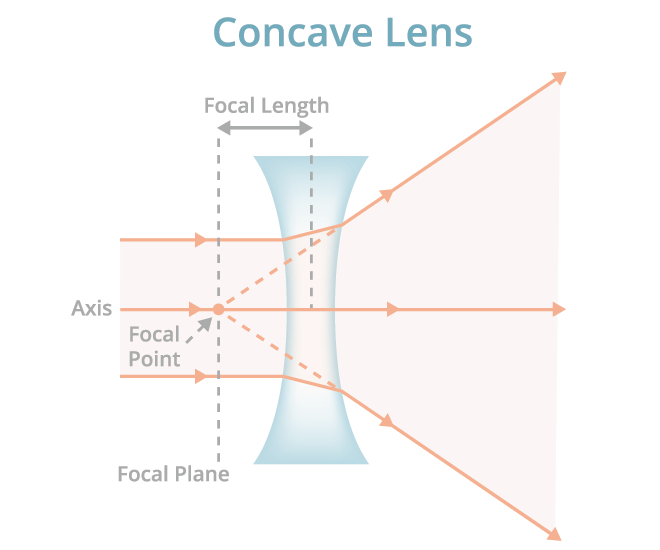
Myopia (Nearsightness)
Common vision condition in which close objects look clear but far objects look blurry
Light doesn’t reach on the back of the eye (retina)
Diverging (Concave lenses)

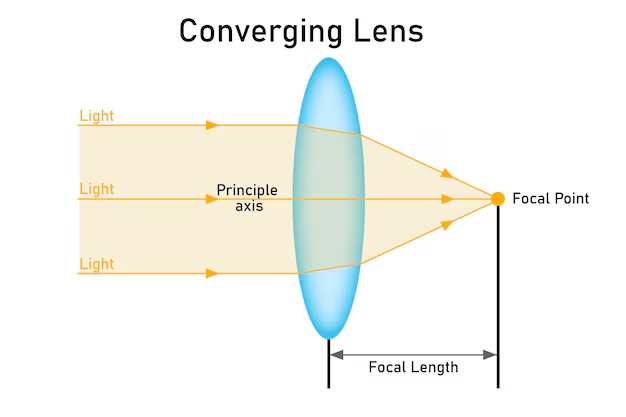
Hyperopia (Farsightness)
Common vision condition in which far objects look clear but close objects look blurry
Light goes too far and passes the back of the eye (retina)
Converging (convex lens
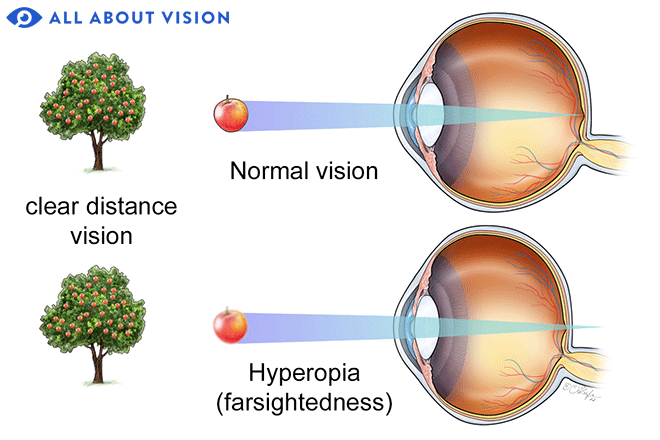
Astigmatism
Common and generally treatable imperfection in the curvature of the eye that causes blurred distance and near vision
Front surface of the eye (cornea) or the lens inside the eye has mismatched curves.
Cylindrical lens
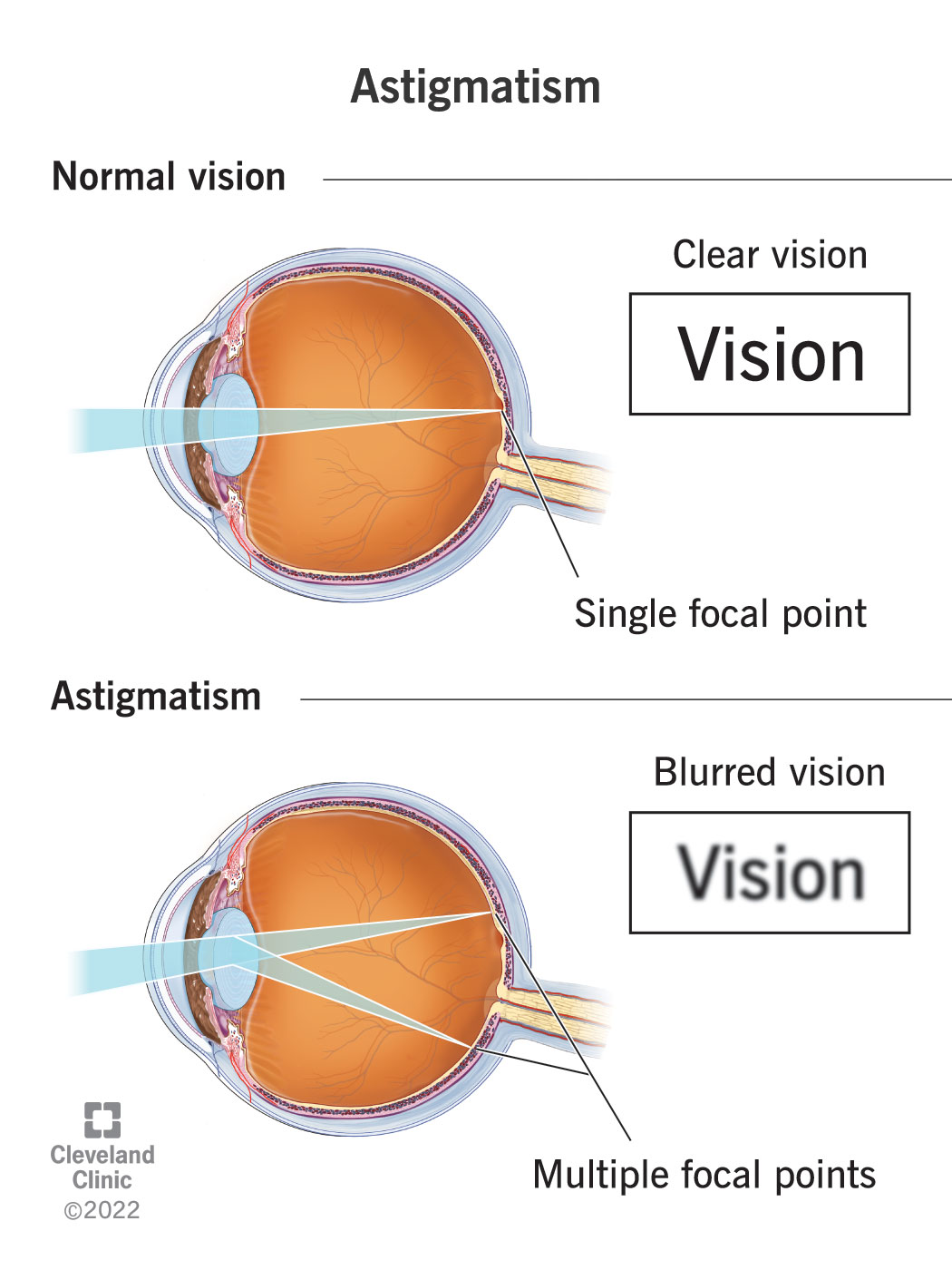
Focal Length Equals
The space between Focal Point and Lens
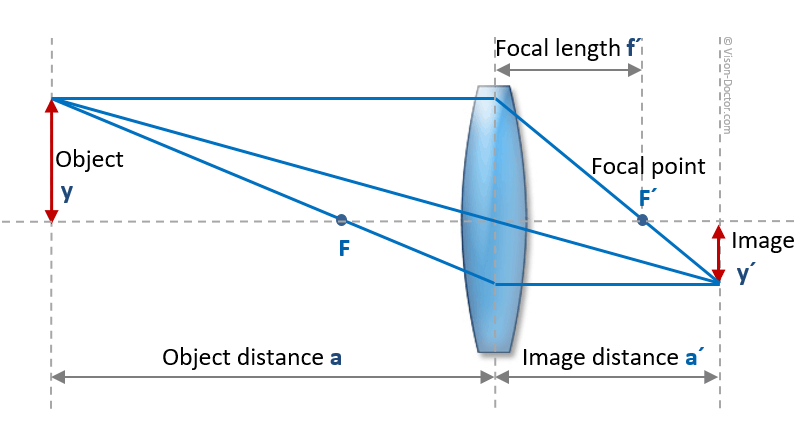
Focal Length is Positive and negative for lenses and images
Lens:
+ converging
- Diverging
Image:
+ Real
- Virtual
Converging (convex Lens)
If the object is away from the Focal point you get
Real Image
Inverted image
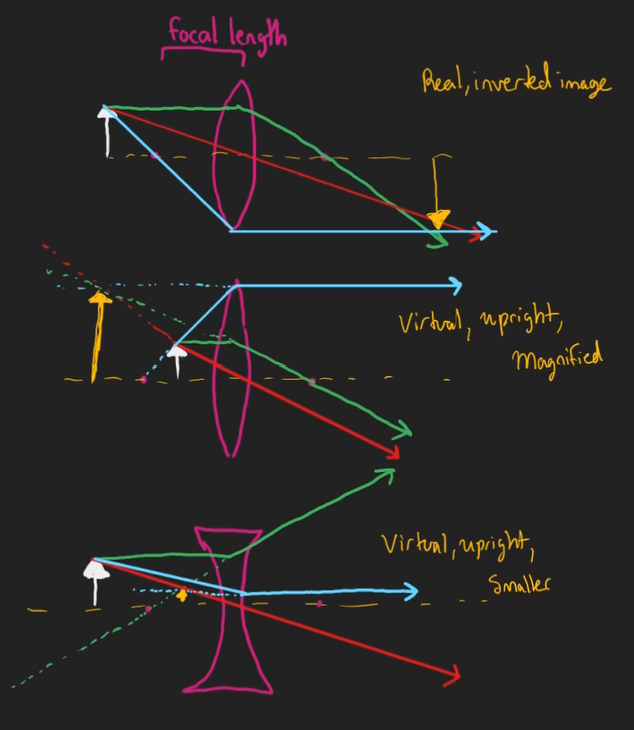
Converging (convex Lens)
If the object is between the Focal point and lens you get
Upright magnified image
Virtual magnified image
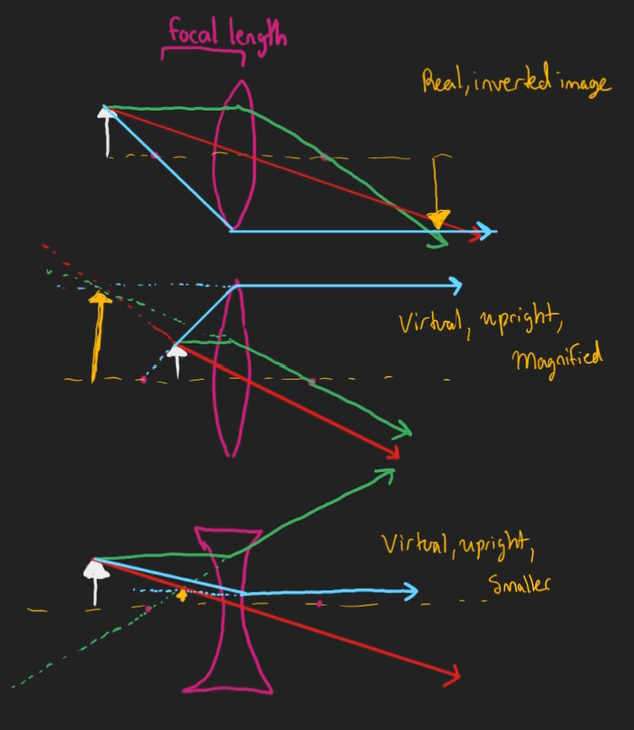
Diverging (Concave Lens)
Object is located anywhere
Virtual smaller image
Upright smaller image
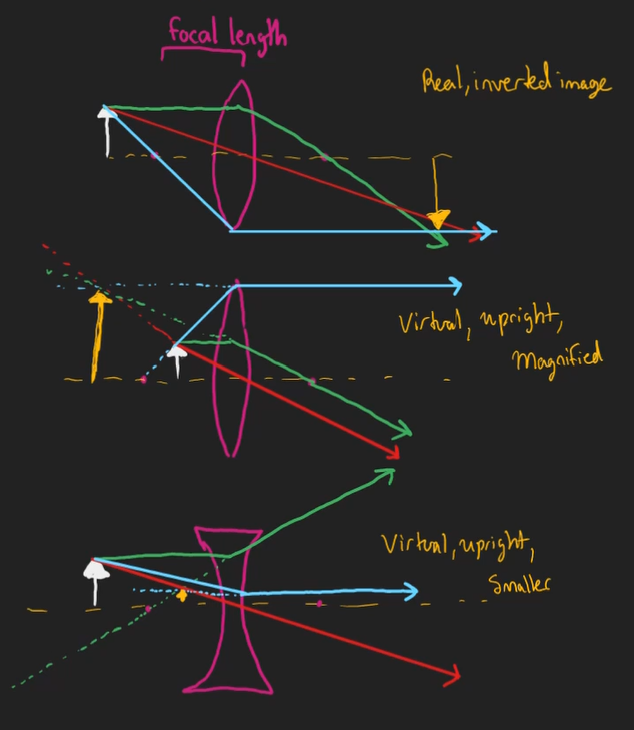
Thin Lens Equation

If an electron goes from the n = 2 shell to the n = 3 shell:
The energy of an electron in orbit n = 3 is less negative or greater than the energy in orbit n = 2. Thus energy is required to make the transition from n = 2 to n = 3 and the atom gains energy.
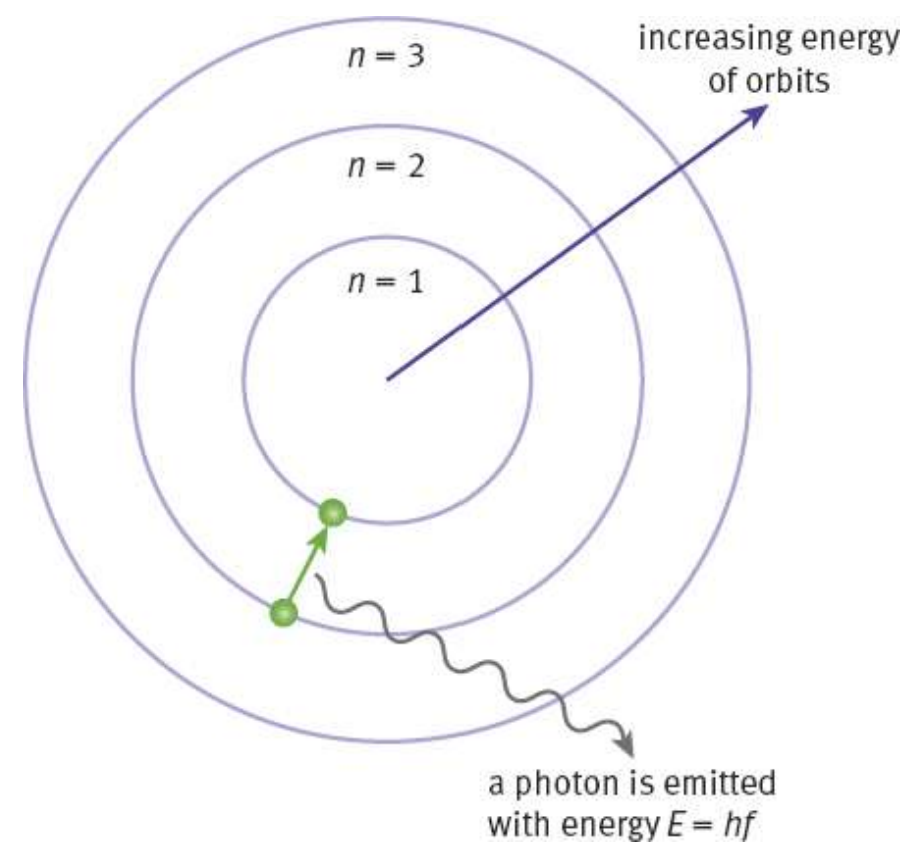
MNEMONIC: As electrons go from a lower (n = 1) energy level to a higher (n= 3) energy level, they get AHED: Remember the Opposite
Absorb light
Higher potential
Excited
Distant (from the nucleus)
Energy increase Photon Absorbed
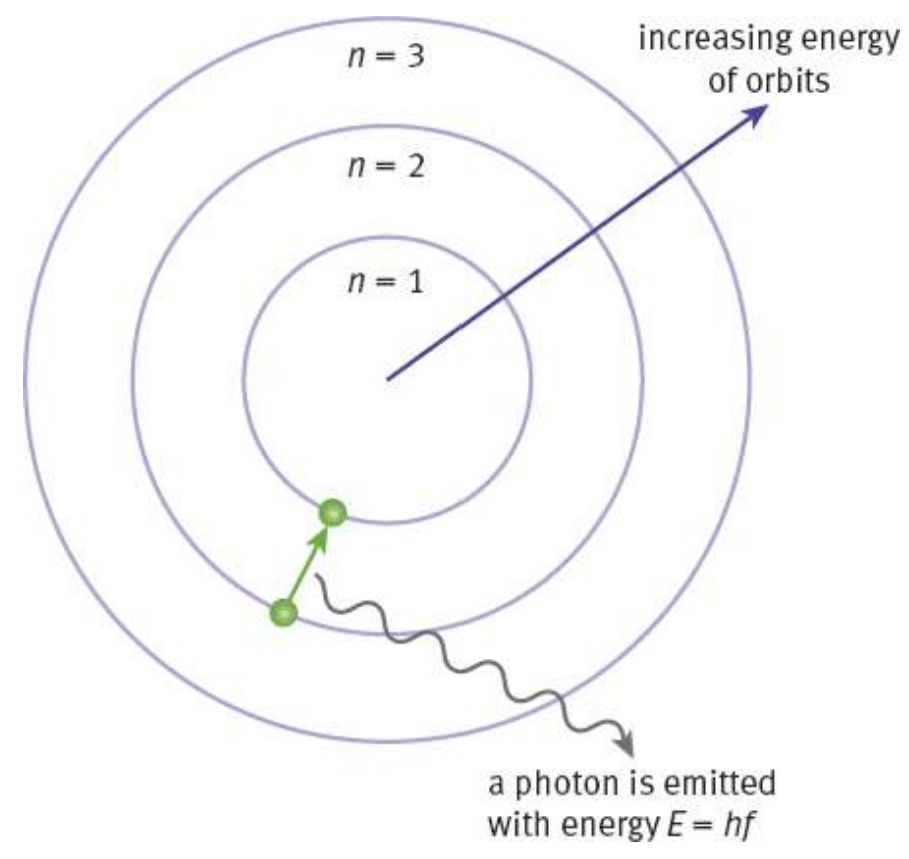
Reflections and Refractions
Happens when light changes medium
Light encounters change in medium

Light Reflection and Transmission
Light can either be reflected or transmitted
Reflection
Theta of Incident = Theta reflection
Transmitted
Travels in continous
Incident Light wave
Is the light approaching the medium
Change in Medium of light
Causes light to bend
When light travels from thin material like air to think material like glass it bends towards the normal and angle decreases
Refractive index
n is always equal to 1 or greater than 1
